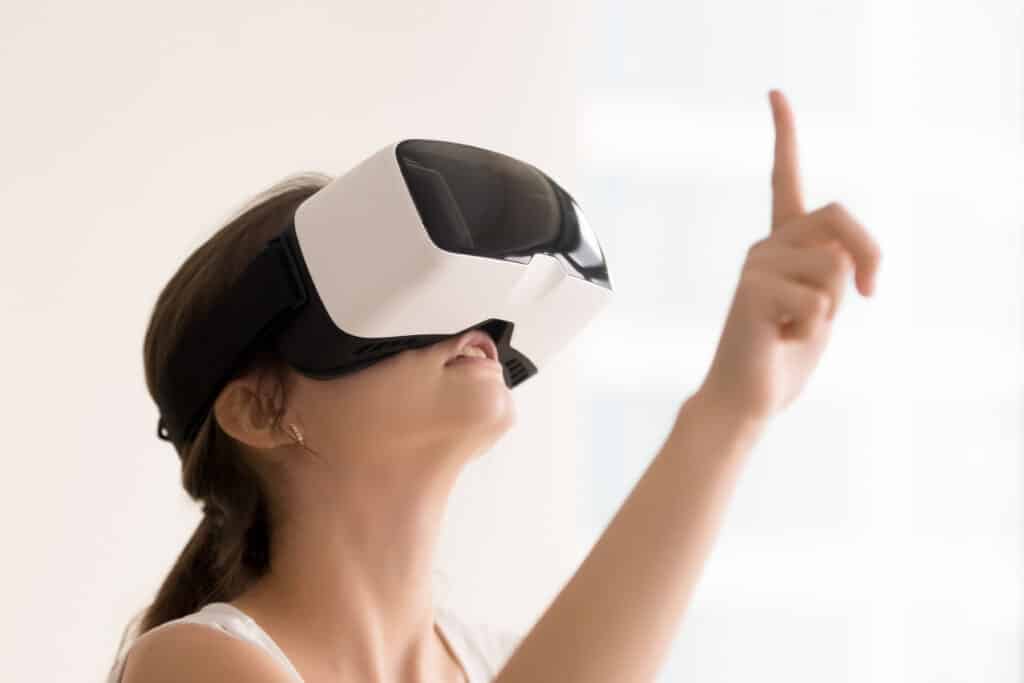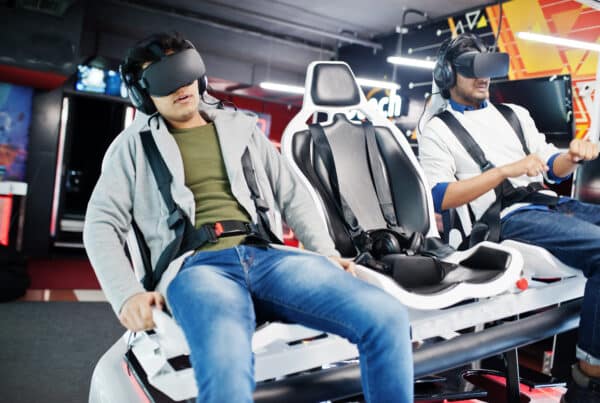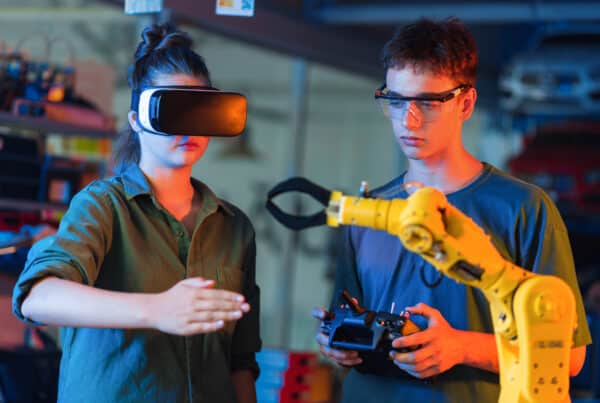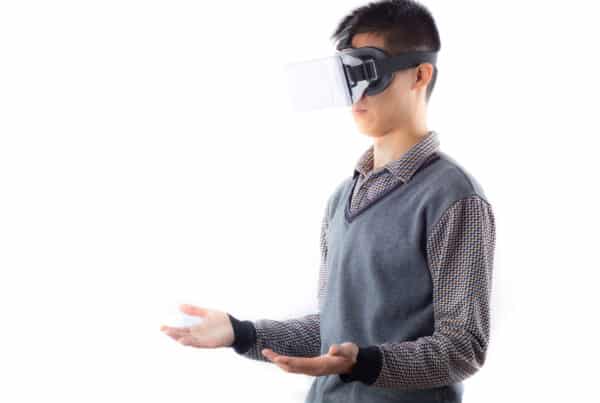
In a world where technology constantly evolves, augmented reality (AR) stands at the forefront, redefining how we interact with our surroundings and enriching everyday experiences. Gone are the days when AR was merely a buzzword associated with gaming and flashy marketing campaigns; today, it has seamlessly woven itself into various aspects of our lives, from shopping and education to healthcare and travel. Imagine trying on clothes virtually before making a purchase or navigating unfamiliar cities with interactive overlays that guide your path—these are just a glimpse of how AR is revolutionizing our daily routines. In this blog post, we will delve beyond the hype to explore the transformative power of augmented reality, showcasing real-world applications that enhance our interactions and improve our lives. Join us as we uncover the potential of AR to not only entertain but also empower, educate, and elevate our everyday experiences.
Introduction to Augmented Reality (AR)
Augmented Reality (AR) is a groundbreaking technology that bridges the gap between the digital and physical worlds, transforming how we engage with our surroundings. Imagine strolling through your favorite store and encountering interactive digital displays that provide real-time product information or using your smartphone to visualize a piece of furniture in your living room. This enhancement of everyday experiences is the essence of AR—overlaying digital content onto the physical environment.
At its heart, AR utilizes devices like smartphones, tablets, and smart glasses to deliver immersive and engaging experiences. Unlike Virtual Reality (VR), which immerses users in entirely new environments, AR enriches our current surroundings, making it a versatile tool across diverse sectors, including retail, gaming, education, and healthcare.
The rise of AR technology is driven by advancements in computer vision, simultaneous localization and mapping (SLAM), and powerful mobile processing capabilities. These innovations enable developers to create engaging AR applications that are both functional and captivating. As businesses increasingly recognize the potential of AR, we witness a surge of creativity that reshapes how we shop, learn, and interact.
This blog post will explore how AR enhances our daily lives, providing consumers with informed purchasing decisions and creating immersive learning experiences, ultimately paving the way for a future where digital and physical worlds coexist seamlessly.
The Evolution of Augmented Reality Technology
The evolution of augmented reality (AR) technology has been truly extraordinary, transitioning from a niche concept to a powerful force impacting various industries. Initially, AR was limited to experimental projects that often relied on bulky hardware and specialized software. Early examples, such as the Virtuality Group’s arcade systems in the early 1990s, showcased basic 3D graphics overlaid on the real world, but the experiences were not widely accessible or immersive.
Entering the 21st century, AR underwent a renaissance fueled by advancements in computing power, mobile technology, and software development. The launch of smartphones equipped with advanced cameras and sensors revolutionized AR, making it available to the masses. Applications like Pokémon GO, which debuted in 2016, captivated millions and showcased the potential for AR to seamlessly integrate digital elements into everyday life, marking a significant turning point in public perception.
Today, AR continues to advance, driven by innovations in machine learning and computer vision. Industries such as retail, education, and healthcare are leveraging AR for practical applications, including virtual fitting rooms and immersive educational tools. As we move forward, AR’s integration with new hardware and its continued development promise to blur the lines between physical and digital realities, redefining how we experience and interact with our world.
Debunking Common Myths About AR
As augmented reality (AR) gains momentum across various sectors, misconceptions about its potential persist. Let’s debunk some common myths surrounding AR to clarify its impact on our daily lives.
Myth 1: AR is Just for Gamers
While games like Pokémon GO popularized AR, its applications span retail, healthcare, education, and real estate. For instance, furniture retailers use AR apps to help customers visualize products in their homes, enhancing decision-making.
Myth 2: AR Requires Expensive Equipment
Many believe that AR necessitates costly devices like high-end goggles. However, AR is accessible through everyday smartphones and tablets, making it more user-friendly and available to a broader audience.
Myth 3: AR is Complicated to Use
Contrary to popular belief, many AR applications feature intuitive designs and guided tutorials, allowing users to engage easily without extensive training.
Myth 4: AR is a Fad
Skeptics view AR as a passing trend, but its effectiveness in improving user engagement proves otherwise. As technology advances, AR is poised to become a vital part of our everyday experiences, transforming how we interact with the world.
AR in Everyday Life: Current Applications
Augmented Reality (AR) has transitioned from a mere futuristic idea into a transformative part of our daily lives, impacting various sectors significantly. One of the most notable applications of AR is in retail, where major brands like IKEA and Sephora have integrated this technology to create immersive shopping experiences. With AR apps, customers can visualize how furniture fits into their homes or virtually try on makeup, effectively breaking the barriers of traditional shopping. Imagine scanning a catalog and instantly seeing that stylish sofa in your living room—this capability is redefining consumer engagement.
In education, AR is a game-changer, allowing students to interact with complex subjects more dynamically. For example, science classes can become more engaging with 3D models of the solar system or human anatomy projected in real-time, enhancing understanding and catering to diverse learning styles.
Healthcare is also benefiting from AR, with surgeons using it to overlay vital information during procedures, leading to improved precision. AR is enhancing medical training by providing realistic simulations for aspiring doctors.
Furthermore, in entertainment, AR gaming, exemplified by Pokémon GO, blends digital elements with the real world, encouraging exploration and community engagement. As AR continues to evolve, its integration into our daily routines promises a future where digital and physical worlds coexist seamlessly.
The Future of Augmented Reality: Trends to Watch
As we enter a new technological era, the future of augmented reality (AR) is set to transform our everyday experiences in remarkable ways. Several emerging trends are poised to revolutionize our interactions with the world around us.
1. Enhanced Retail Experiences: Retailers are leveraging AR to create immersive shopping experiences. Picture trying on clothes virtually from home or visualizing how furniture fits in your living room. Brands like IKEA and Sephora are pioneering this shift, integrating AR into their apps to help customers make informed choices, reduce returns, and boost overall satisfaction.
2. AR in Education: Education is ripe for transformation through AR. Interactive lessons can bring history to life or visualize complex scientific concepts in 3D, making learning more dynamic. Schools and universities are exploring AR applications that allow hands-on engagement, enhancing accessibility and enjoyment for all ages.
3. Remote Collaboration and Training: As remote work grows, AR is emerging as a tool for innovative collaboration, providing virtual environments where teams can interact as if together. Training programs are also evolving, enabling employees to practice skills in simulated settings that reflect real-world scenarios, improving retention.
4. Health and Wellness Applications: The healthcare sector is increasingly utilizing AR to enhance patient outcomes. Surgeons can overlay AR visuals to comprehend complex anatomy during procedures, while patients benefit from engaging AR rehabilitation programs.
5. Integration with AI and IoT: The convergence of AR with artificial intelligence (AI) and the Internet of Things (IoT) will further amplify its capabilities. Envision a smart device that adapts its AR interface based on personal preferences or surroundings, providing tailored experiences. This synergy will create new levels of interactivity and convenience, seamlessly merging digital and physical realities.
As these trends develop, it’s evident that augmented reality is a powerful tool, poised to enrich our daily lives. By staying informed about these advancements, we can prepare for a future where AR enhances how we shop, learn, collaborate, and manage our health. The journey ahead is full of exciting possibilities.
In conclusion, augmented reality (AR) has evolved into a transformative technology that significantly enhances our everyday experiences across various domains. As it permeates our lives—from the way we shop and learn to how we navigate healthcare—AR is redefining interaction with our environment. With its ability to blend digital content seamlessly into the physical world, AR enriches consumer engagement by allowing users to visualize products in real-time, making informed decisions easier than ever. In education, AR fosters interactive learning, helping students grasp complex concepts through immersive experiences. Furthermore, its practical applications in healthcare and remote collaboration demonstrate AR’s versatility and potential to improve outcomes.
As we continue to explore the capabilities of augmented reality, it is clear that this technology is not just a passing trend but a vital tool that empowers us in various aspects of life. By embracing AR, we are not only enhancing our interactions with the world around us but also paving the way for a future where digital and physical realities coexist harmoniously. The possibilities that AR presents are truly limitless.
Experience the future with augmented reality! From shopping and education to entertainment and business, AR is revolutionizing daily life. Engage, interact, and enhance reality like never before. Contact us today to discover how augmented reality can transform your experiences and elevate your brand with cutting-edge technology!




